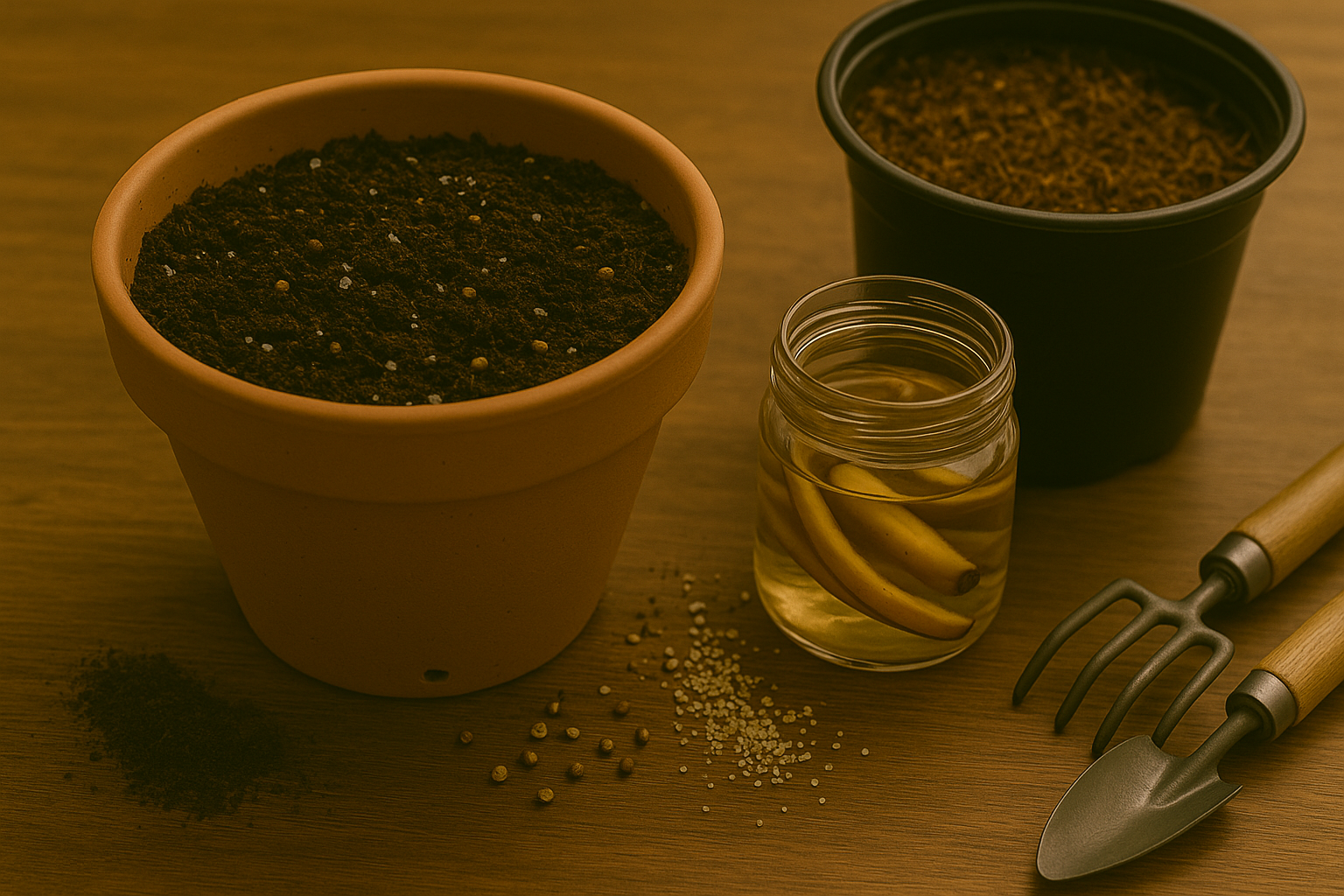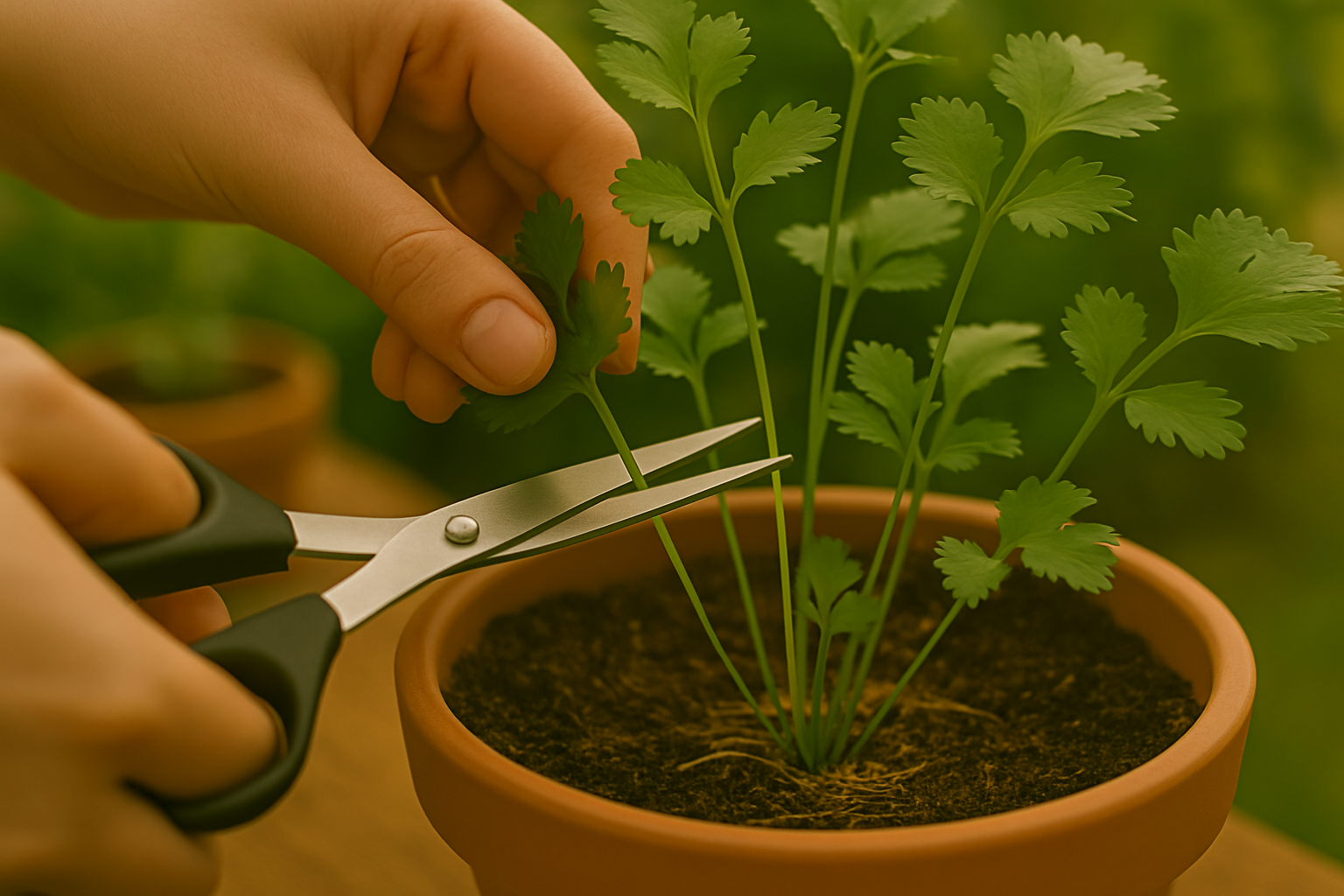Why Grow Cilantro in Containers?
Cilantro is a remarkably versatile herb, adding a fresh burst of flavor to dishes like salsa, guacamole, curries, and rice bowls. It’s a favorite among home cooks and professional chefs alike. Growing cilantro in containers offers several advantages, making it an appealing choice for gardeners—especially those with limited space or challenging soil conditions.
Containers allow for precise control over soil quality and moisture, reducing the risk of root rot and other soil-borne diseases common in garden soil. They also make it easier to keep pests at bay since the entire environment is contained and can be quickly moved indoors or to a protected area if needed.
Unlike planting cilantro directly in the ground, where soil conditions and weather can be unpredictable, containers provide flexibility. You can move plants into more sunlight, shade them on hot days, or even bring them indoors to extend the growing season. This adaptability means you can enjoy a steady supply of vibrant, fragrant cilantro leaves right on your kitchen windowsill or patio.
For anyone who loves tossing chopped cilantro into salsa, sprinkling it over tacos, or blending it into Thai curries, growing your own in containers ensures you always have the freshest sprigs on hand. Container gardening isn’t just practical—it’s a way to keep your favorite flavors within reach, even if you only have a small balcony or a sunny windowsill to spare.
Choosing the Right Pot and Soil

When growing cilantro in containers, picking the right pot and soil is crucial for healthy, thriving plants. Start with a container that’s at least 8–12 inches deep and wide enough to let the roots stretch—cilantro grows a taproot and doesn’t like cramped conditions.
Good drainage is essential, so look for pots with multiple holes in the bottom, or add your own if needed. Unglazed terracotta pots are a great choice because they allow airflow and help keep soil from staying soggy, though sturdy plastic pots can work just as well and are lighter to move around. Avoid dark-colored pots if you’re gardening in hot climates, as they can heat up and dry the soil too quickly.
Fill your container with a high-quality, well-draining potting mix; look for mixes containing perlite, coconut coir, or vermiculite to keep soil light and airy. Cilantro thrives in rich, fertile soil, so blend in a couple of handfuls of compost or worm castings before planting. This boosts nutrients and helps the soil retain moisture without getting waterlogged.
Place your container where cilantro can get at least 4–6 hours of sun each day—a south-facing balcony, patio, or windowsill is ideal. If you live somewhere with very hot summers, consider giving plants afternoon shade or moving the pot to a cooler spot to prevent bolting (premature flowering). Monitor the temperature, aiming to keep cilantro between 50–75°F (10–24°C) for best results.
Remember, consistently moist—but not wet—soil is key, so water when the top inch feels dry, and consider mulching the surface with straw or dried leaves to help retain moisture and keep roots cool. By following these practical tips, you’ll set the stage for lush, flavorful cilantro right outside your door.
Planting Cilantro

Choosing whether to plant cilantro from seeds or purchase young starts depends on your gardening goals, space, and patience. Starting from seeds is budget-friendly and gives you the most control—cilantro develops a long taproot that dislikes being moved, so direct sowing minimizes transplant shock and produces stronger, more resilient plants.
Seeds also offer a wider range of varieties and the ability to stagger plantings for a longer harvest. However, starting from seeds requires a bit more time and attention, especially since cilantro can bolt quickly in warm weather.
On the other hand, buying young plants (starts) offers instant gratification and a head start on harvesting, but transplanted cilantro sometimes struggles to establish and may bolt sooner due to root disturbance.
If you decide to grow from seed, fill a container with well-draining potting mix and sow seeds about 1/4 inch deep, spaced 1 to 2 inches apart. Water gently to keep the soil moist. Once seedlings have a couple of true leaves, thin them to 6 inches apart so each plant has space to grow.
For best results, sow seeds outdoors in early spring or late summer, as cilantro prefers cool weather, and repeat every 2-3 weeks until temperatures heat up. This staggered planting technique ensures a steady supply—you’ll always have young cilantro coming up as older plants begin to flower.
Whether you start with seeds or young plants, keep containers in a sunny spot but out of harsh afternoon heat to maximize your harvest window and keep your cilantro producing fresh leaves as long as possible.
Caring for Cilantro

Container-grown cilantro thrives when you stick to a consistent, moderate watering routine. Aim to water your cilantro whenever the top inch of soil feels dry—usually every two to three days in warm weather—but scale back if the soil stays moist longer. Overwatering can quickly lead to root rot, so choose pots with drainage holes and use a light, well-draining potting mix.
To keep your cilantro robust, feed it every four to six weeks with a balanced, water-soluble fertilizer diluted to half strength. Avoid over-fertilizing, as excess nutrients often result in lush leaves but poor flavor.
Pest issues like aphids and spider mites can pop up, especially in crowded conditions. Inspect leaves regularly and, if pests appear, gently wash them off with a spray of water or use insecticidal soap.
Diseases such as powdery mildew and damping off are less common in containers but still possible. Improve air circulation by spacing pots well, remove affected leaves, and water early in the day so foliage dries quickly.
Bolting—when cilantro sends up flower stalks and stops producing tasty leaves—is your biggest enemy for a long harvest. Cilantro prefers cool temperatures, so position containers where they receive morning sun and afternoon shade in hot weather; this helps delay bolting.
Regularly snip outer leaves with scissors to encourage bushier growth, and never remove more than a third of the plant at one time. Also, grow cilantro successively by sowing new seeds every few weeks—this staggered approach keeps fresh leaves coming throughout the season.
With these straightforward care steps, you can enjoy vibrant, flavorful cilantro from your container garden for months on end.
Harvesting Cilantro for Best Flavor

Knowing the right time to harvest cilantro makes all the difference for fresh, flavorful leaves. Look for leaves that are bright green, medium to large in size—about three to six inches tall—with frilly edges, and no yellowing or flowers (bolting stems). Harvesting younger leaves produces the best flavor, as mature cilantro can get bitter or tough.
To harvest, use clean scissors or pinch off individual stems from the outside of the plant, cutting about one-third of the way down but leaving the main central stalk and the smallest inner leaves untouched. This method encourages the plant to keep producing new shoots and prevents it from going to seed prematurely.
Aim to harvest every week or two once your cilantro is established, but avoid removing more than a third of the plant at a time to prevent shocking it. If you keep the plant from flowering by snipping off any flower buds as they appear, and continue with partial harvests, cilantro can regrow for several more weeks—even months in cool weather—before it ultimately bolts.
You might notice regrowth within a week after a careful trim, but remember cilantro has a relatively short life cycle, so replanting every few weeks will ensure a steady supply. With these simple steps, you’ll enjoy a succession of tender, aromatic cilantro from your garden or windowsill, all season long.
Storing and Using Fresh Cilantro
To keep cilantro fresh after harvest, proper storage is key. For short-term storage, trim the stems and place the bunch upright in a jar with water, like a bouquet. Then, loosely cover it with a plastic bag and refrigerate—this can keep the leaves vibrant for up to a week. Remember to change the water every few days to prevent spoilage.
If you have more cilantro than you can use quickly, freezing is a great option. Wash and dry the leaves thoroughly, chop if desired, and freeze them in ice cube trays with a little water or olive oil. This makes it easy to add cilantro to soups, stews, or sauces later.
Drying is another option. You can air-dry small bundles upside down in a cool, airy spot or use a food dehydrator, though drying may mute the fresh flavor a bit.
To maximize cilantro’s taste and nutrients, add it raw or at the end of cooking, since heat can diminish its potency.
Fresh cilantro is wonderfully versatile. Try sprinkling chopped leaves over tacos, curries, scrambled eggs, salads, or even blending them into green smoothies. No matter how you store or use it, acting quickly after harvest preserves both the bright, citrusy flavor and the health benefits of this delicate herb.
Saving Seeds and Keeping Cilantro Going
Allowing cilantro to flower and collect coriander seeds is simple and rewarding. When the weather warms, let a few plants bolt—tiny white flowers will appear, soon followed by green seed pods. Wait until the pods turn brown, then snip the stems and shake the seeds free over a paper towel. Store the seeds in a cool, dry place for future planting or for use in cooking.
For a constant supply of fresh cilantro, succession planting is key. Sow a new batch every two to three weeks, choosing cooler spots in your garden as temperatures rise. In hot climates, provide afternoon shade or use shade cloth to prevent the plants from bolting too quickly.
In cooler zones, extend the harvest by growing cilantro in containers you can move indoors when frost threatens, or use cold frames and row covers in early spring and fall. This way, you’ll have aromatic leaves for weeks on end.
